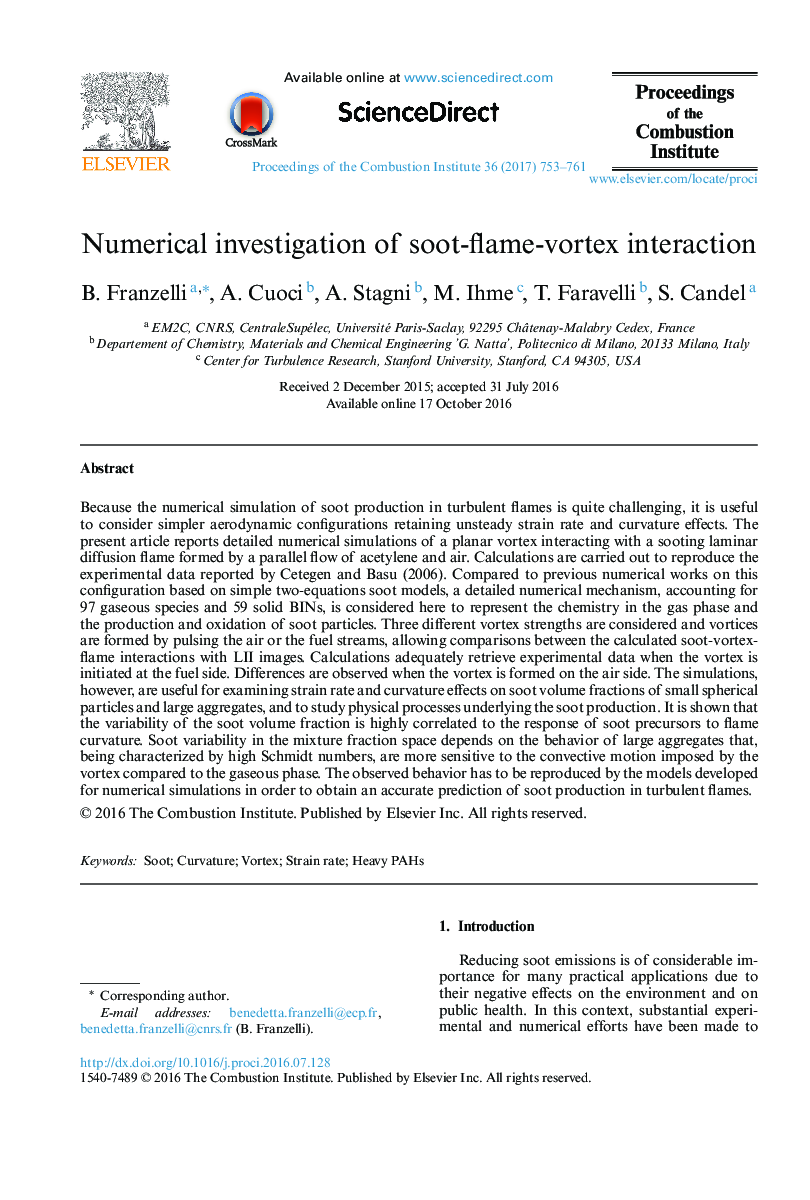| کد مقاله | کد نشریه | سال انتشار | مقاله انگلیسی | نسخه تمام متن |
|---|---|---|---|---|
| 6478097 | 1427917 | 2017 | 9 صفحه PDF | دانلود رایگان |
Because the numerical simulation of soot production in turbulent flames is quite challenging, it is useful to consider simpler aerodynamic configurations retaining unsteady strain rate and curvature effects. The present article reports detailed numerical simulations of a planar vortex interacting with a sooting laminar diffusion flame formed by a parallel flow of acetylene and air. Calculations are carried out to reproduce the experimental data reported by Cetegen and Basu (2006). Compared to previous numerical works on this configuration based on simple two-equations soot models, a detailed numerical mechanism, accounting for 97 gaseous species and 59 solid BINs, is considered here to represent the chemistry in the gas phase and the production and oxidation of soot particles. Three different vortex strengths are considered and vortices are formed by pulsing the air or the fuel streams, allowing comparisons between the calculated soot-vortex-flame interactions with LII images. Calculations adequately retrieve experimental data when the vortex is initiated at the fuel side. Differences are observed when the vortex is formed on the air side. The simulations, however, are useful for examining strain rate and curvature effects on soot volume fractions of small spherical particles and large aggregates, and to study physical processes underlying the soot production. It is shown that the variability of the soot volume fraction is highly correlated to the response of soot precursors to flame curvature. Soot variability in the mixture fraction space depends on the behavior of large aggregates that, being characterized by high Schmidt numbers, are more sensitive to the convective motion imposed by the vortex compared to the gaseous phase. The observed behavior has to be reproduced by the models developed for numerical simulations in order to obtain an accurate prediction of soot production in turbulent flames.
Journal: Proceedings of the Combustion Institute - Volume 36, Issue 1, 2017, Pages 753-761
